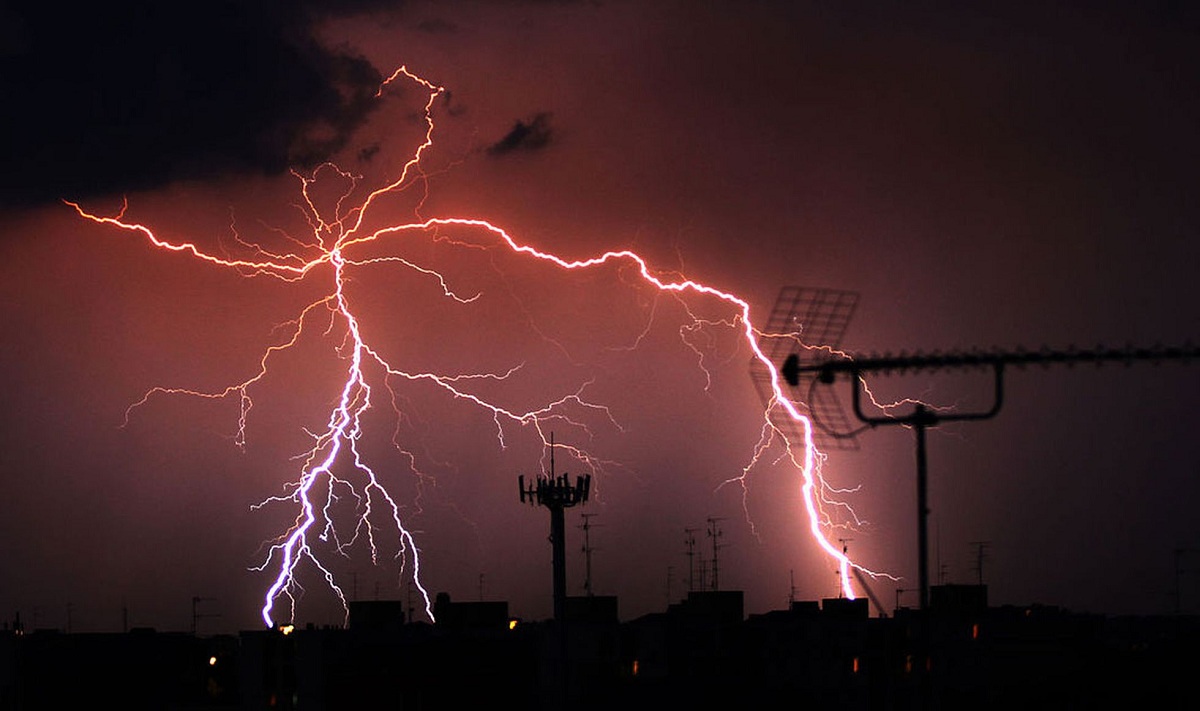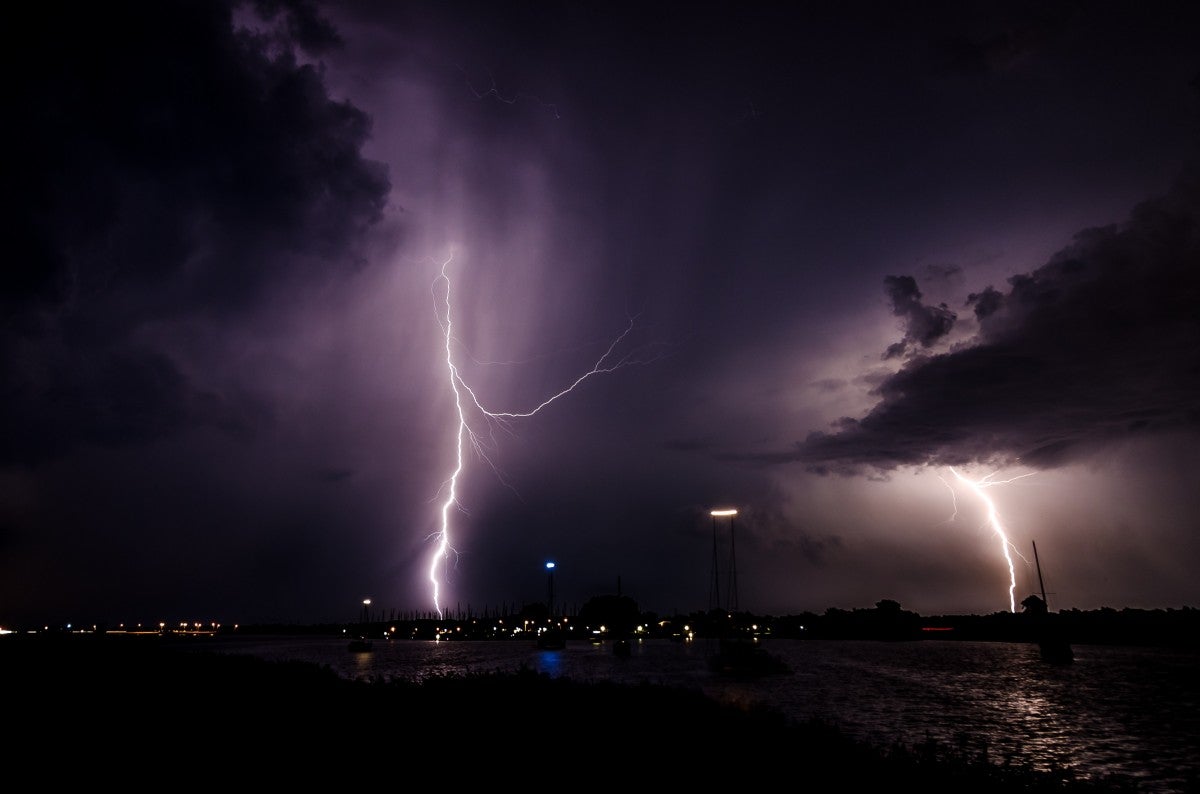
Humans have always been fascinated by lightning. It is a powerful natural electrostatic discharge. It usually occurs during electrical storms that generate electromagnetic pulses. This discharge of lightning is accompanied by the emission of light called lightning and a sound called thunder. However, many people do not know how rays are formed.
Therefore, we are going to dedicate this article to tell you how rays are formed and what are the different types of year.
Key features
The discharge of lightning is accompanied by the emission of light. This emission of light is called lightning and is caused by the passage of an electrical current that ionizes molecules in the air. Immediately after, a sound called Thunder plays, developed by shock waves. The electricity generated passes through the atmosphere, heats up the atmosphere, causes the air to expand rapidly, and produces a peculiar noise from the ground. The rays are in a plasma state.
The average length of a ray is about 1.500-500 meters. Interestingly, in 2007, the longest lightning strike on record occurred in Oklahoma, reaching a length of 321 kilometers. Lightning typically travels at an average speed of about 440 kilometers per second, up to 1.400 kilometers per second. The potential difference is my million volts relative to the ground. Therefore, these rays have a high danger. Each year there are about 16 million lightning storms across the planet.
The most normal thing is that among the different types of rays, these are produced by positive particles in the ground and negative particles in the clouds. This is due to the vertical development of clouds called cumulonimbus. When the cumulonimbus cloud reaches the tropopause (the final area of the troposphere), the positive charges in the cloud are responsible for attracting negative charges. This movement of electrical charges in the atmosphere forms rays. It usually forms a back and forth effect. It refers to the vision that the particles instantly rise and return to cause the light to fall.
Lightning can generate 1 million watts of instantaneous power, which is comparable to a nuclear explosion. The discipline in charge of studying lightning and everything related to meteorology is called earth science.
How rays are formed
How the electric shock started remains a controversial issue. Scientists have not yet been able to determine what the root cause is. The most famous are those who say that atmospheric disturbances are the reason for the origin of the types of lightning. These disturbances in the atmosphere are due to changes in wind, humidity and atmospheric pressure. Too the influence of the solar wind and the accumulation of charged solar particles are discussed.
Ice is considered a key component of development. This is because it is responsible for promoting the separation of positive and negative charges in the cumulonimbus cloud. Lightning can also be produced in ash clouds from volcanic eruptions, or it can be the result of dust from violent forest fires that can generate static charges.
In the electrostatic induction assumption, the electrical charge is thought to be driven by a process that humans are not yet sure about. The separation of charges requires a strong upward flow of air, which is responsible for carrying the water droplets upward. In this way, when the water droplets reach a higher altitude where the surrounding air is colder, accelerated cooling will occur. Normally these levels are supercooled at temperatures of -10 and -20 degrees. The collision of ice crystals forms a combination of water and ice, called hail. The collision caused a slight positive charge to be transferred to the ice crystals and a slight negative charge to the hail.
The current pushes the lighter ice crystals upward and causes positive charges to build up at the back of the cloud. Finally, the effect of Earth's gravity causes the hail to fall with a negative charge, because the hail gets heavier as it gets closer to the center and bottom of the cloud. The separation and accumulation of charge continues until the potential becomes sufficient to initiate a discharge.
Another hypothesis about the polarization mechanism has two components. Let's see what they are:
- Falling ice and water droplets become polarized when they fall into the earth's natural electric field.
- The falling ice particles collide and are charged by electrostatic induction.
How rays are formed and their different types
- The most common lightning. it is the most frequently observed, known as streak lightning. This is the visible part of the ray tracing. Most of them occur in the cloud and therefore cannot be seen. Let's see what are the main types of rays:
- Cloud-to-ground lightning: it is the most famous and the second most common. It is the greatest threat to life and property. It can hit the ground and discharge between the cumulonimbus cloud and the ground.
- Pearl Ray: this is cloud-to-ground lightning that appears to be divided into a series of short, bright parts.
- Staccato lightning: This is another short-lived cloud-to-ground lightning bolt and appears to be the only flash. It is usually very bright and has a considerable impact.
- Forked beam: they are those rays from cloud to ground that exhibit the branching of their path.
- Cloud ground lightning: it is a discharge between the earth and the cloud that begins with an initial upward stroke. It is more rare must.
- Cloud to cloud lightning: occurs between areas that are not in contact with the ground. It usually occurs when two separate clouds generate a difference in electrical potential.
I hope that with this information you can learn more about how rays are formed, their characteristics and the different types that exist.


